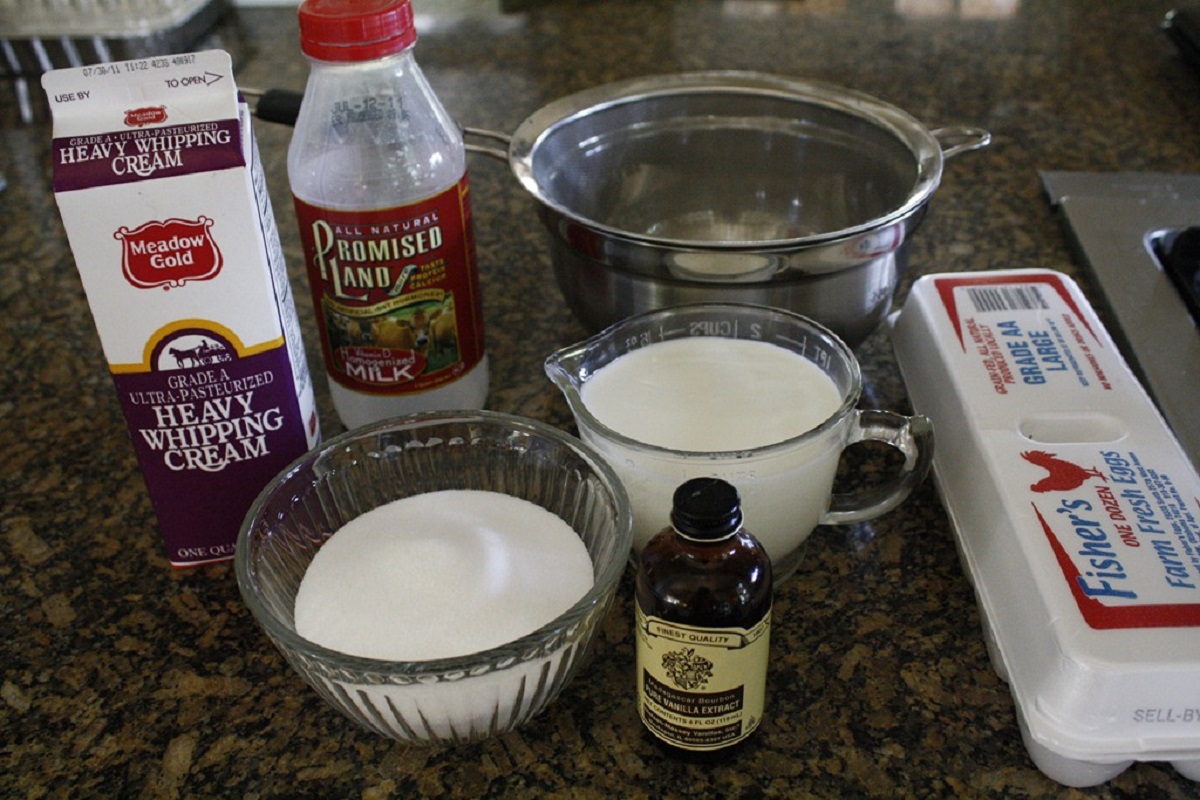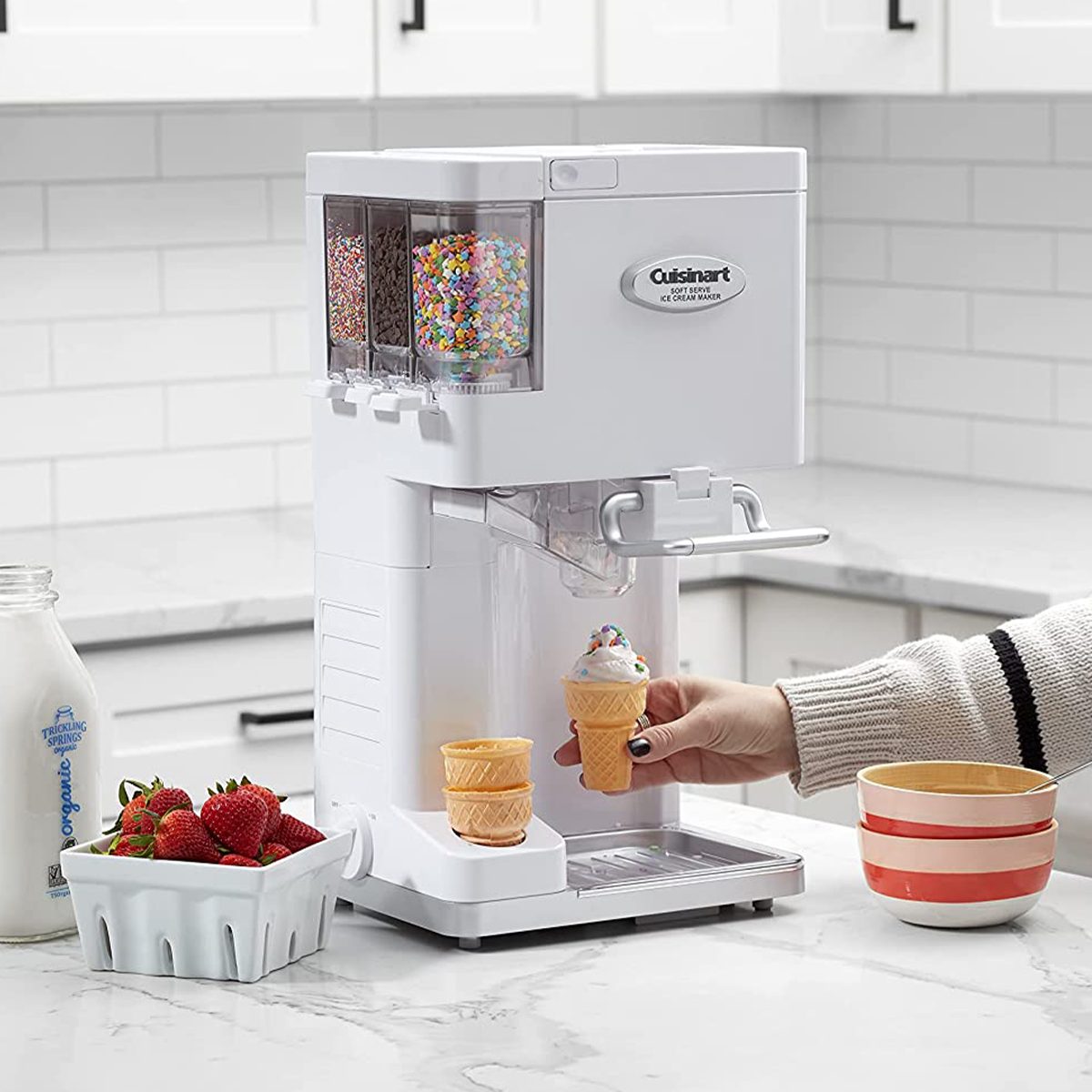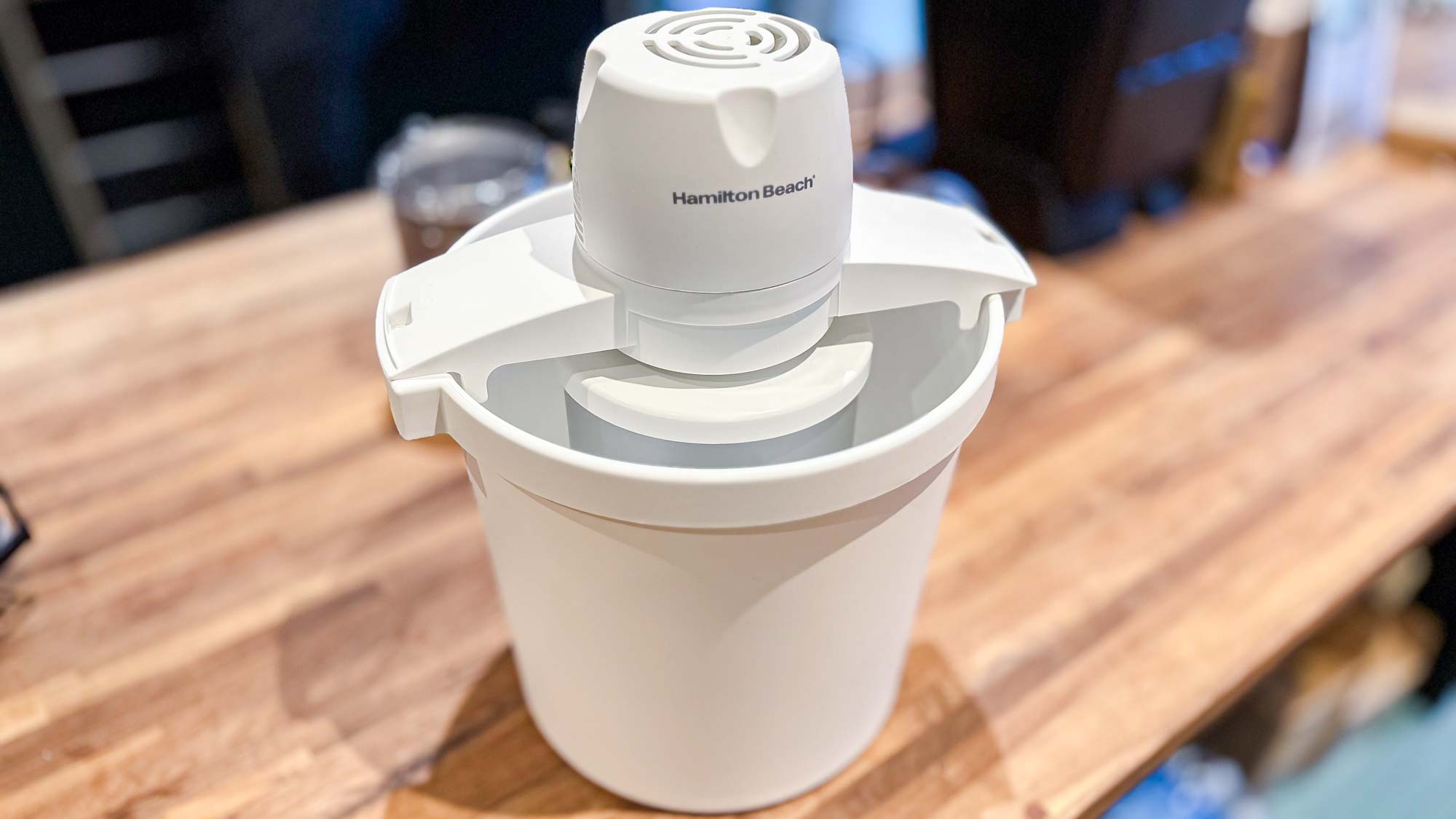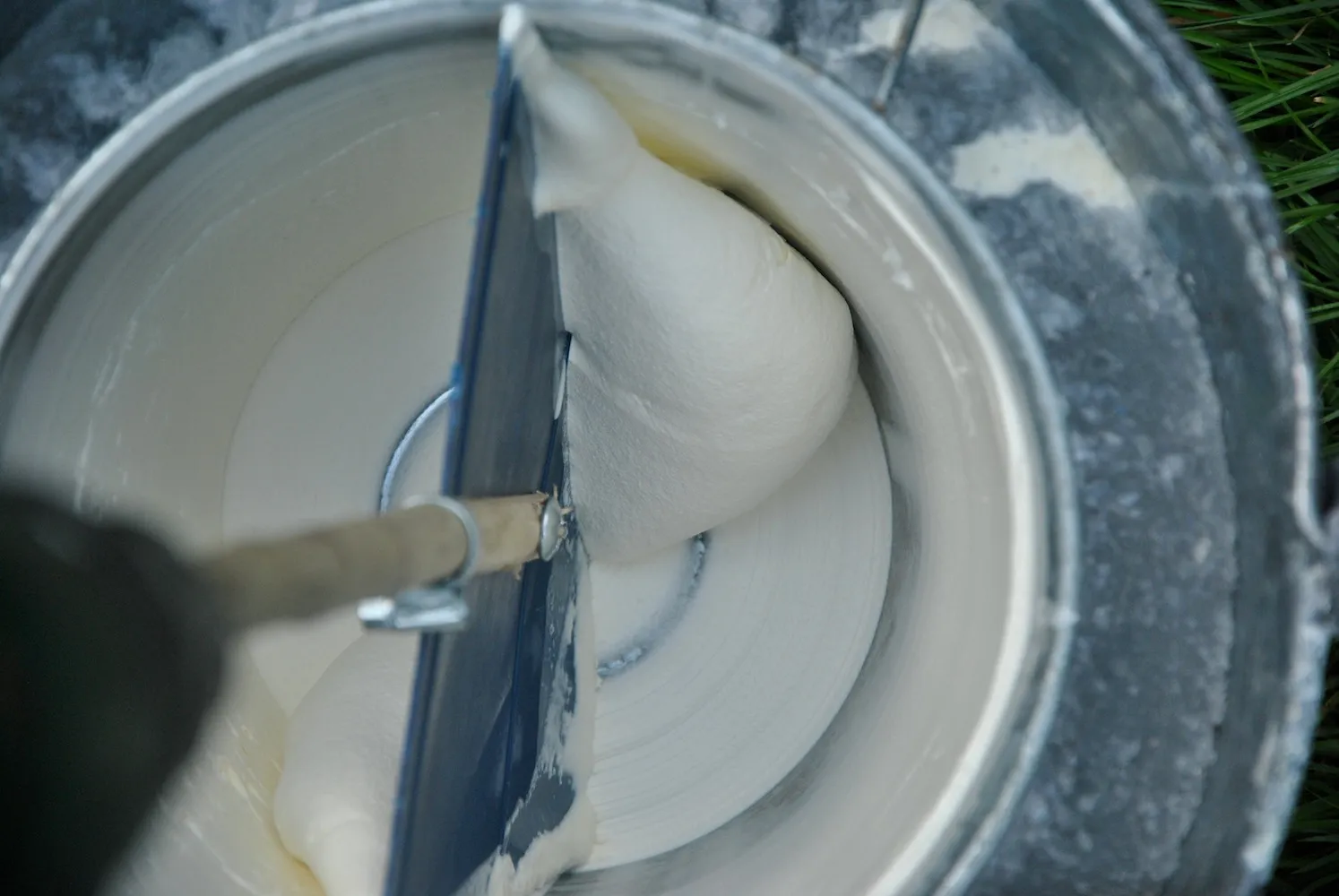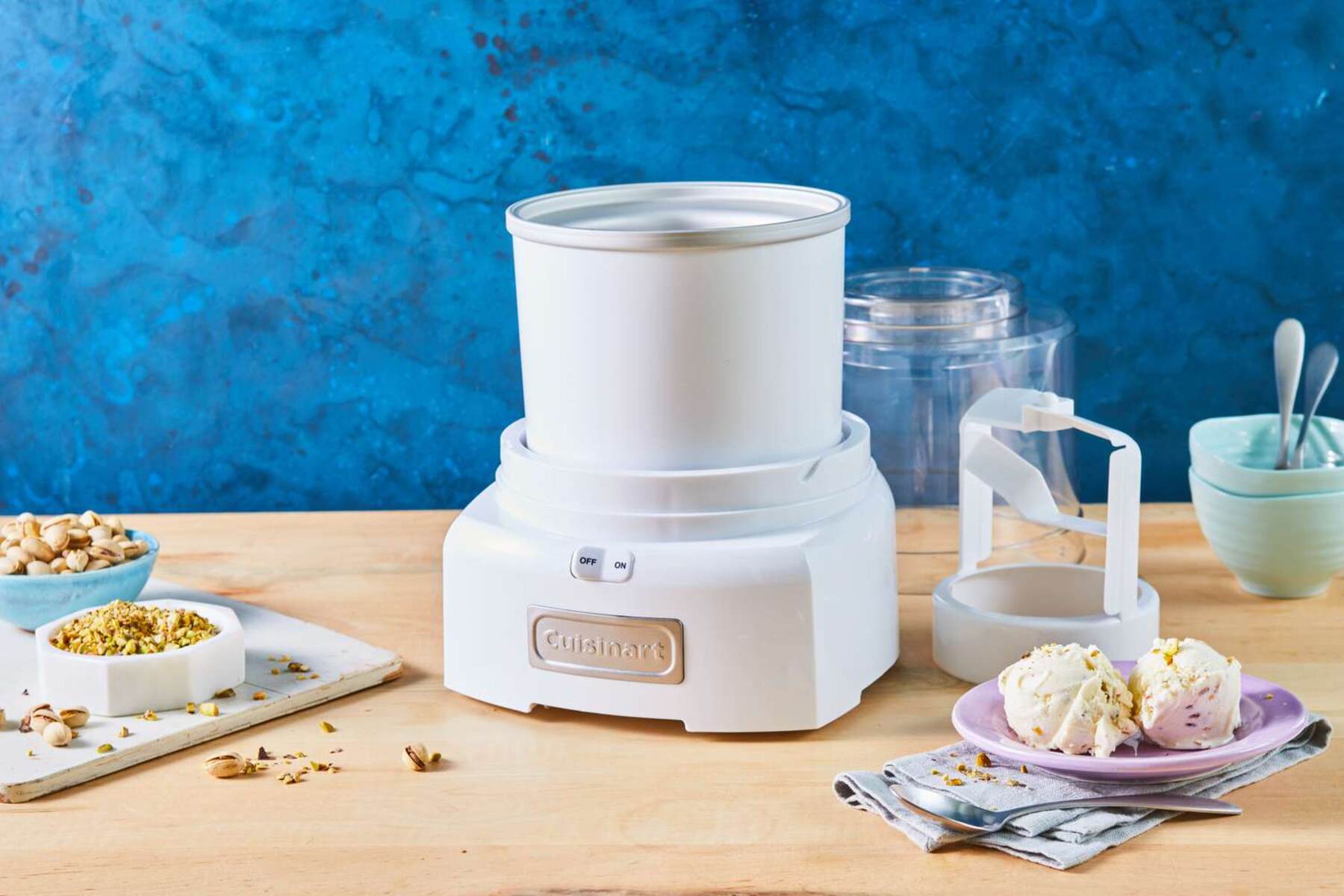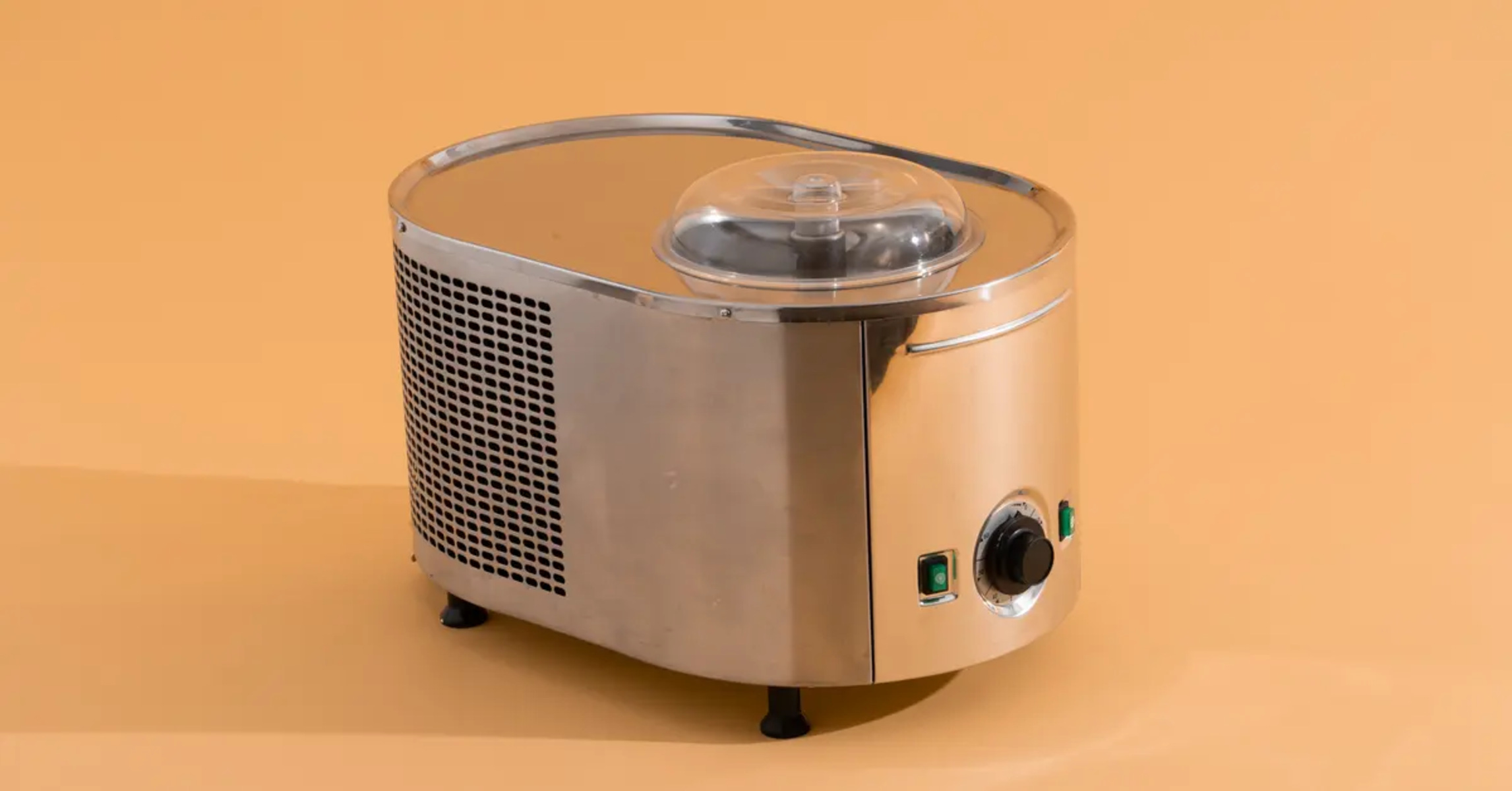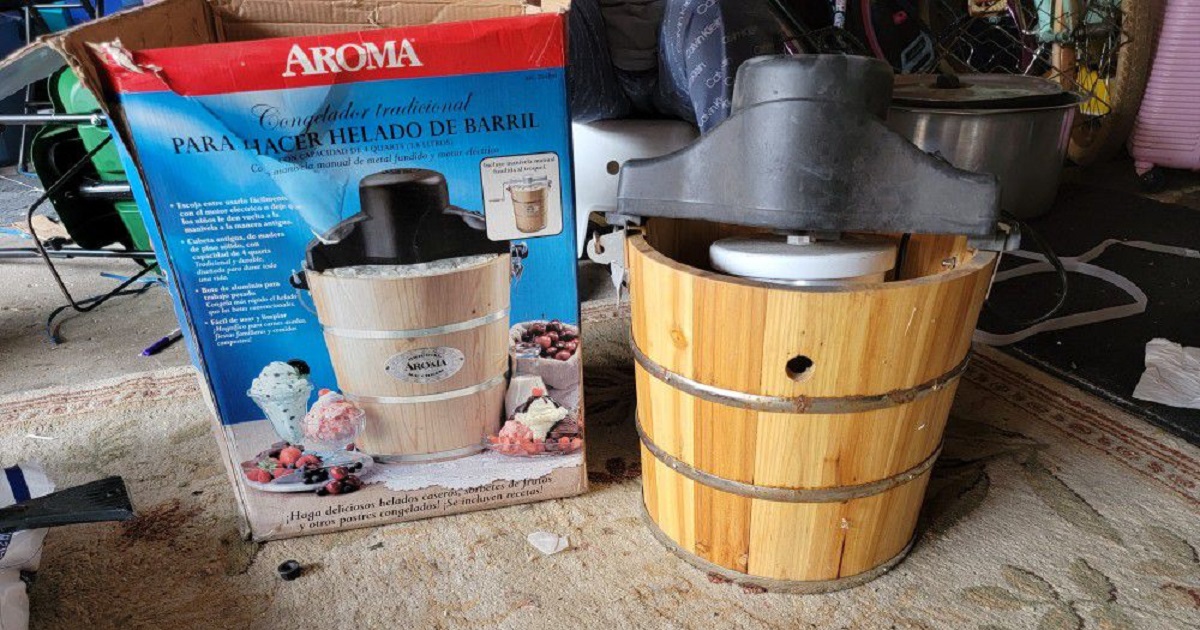Introduction
Welcome to the delightful world of homemade ice cream! If you’re a fan of this creamy and indulgent treat, then making your own ice cream with an ice cream maker is a fantastic way to elevate your dessert experience. Not only does it allow you to tailor the flavors to your liking, but it also ensures that you have control over the quality of the ingredients used. But what exactly do you need to make ice cream with an ice cream maker?
In this article, we will explore the essential ingredients that you need to create the perfect homemade ice cream. From the creamy base to the flavorful additions, understanding the components of ice cream making will help you create frozen delights that will have everyone begging for seconds.
Whether you prefer classic flavors like vanilla and chocolate or want to experiment with unique combinations, the foundation of any great ice cream starts with a few key ingredients. Let’s dive in and discover what you need to get started on your ice cream making adventure!
Milk or Cream
The first and most important ingredient for making ice cream is milk or cream. It serves as the base of your frozen treat, providing the creamy texture and richness that we all love. There are a few different options when it comes to choosing the dairy component for your ice cream.
If you prefer a lighter and less fatty ice cream, you can opt for milk. Whole milk, with its higher fat content, will give you a creamier result, while low-fat or skim milk will yield a lighter texture. Keep in mind that using milk alone may result in a slightly icier consistency, as it contains less fat.
If you want a truly decadent and luscious ice cream, using heavy cream or a combination of cream and milk will do the trick. Heavy cream has a higher fat content, which creates a luxuriously smooth and rich mouthfeel. For a lighter option, you can use half-and-half, which is a mixture of equal parts whole milk and light cream.
Keep in mind that the amount of milk or cream you use will also affect the final texture of your ice cream. More milk or cream will result in a softer, more melt-in-your-mouth consistency, while less milk or cream will yield a firmer ice cream that holds its shape better.
Experiment with different ratios of milk and cream to find the perfect balance that suits your taste preferences. From silky gelato to rich and creamy indulgence, the choice of milk or cream is a crucial step in creating your dreamy homemade ice cream.
Sugar
No ice cream is complete without a touch of sweetness, and that’s where sugar comes into play. Sugar not only adds a delectable sweetness to your ice cream but also helps to create a smooth and creamy texture.
There are various types of sugar that you can use in your ice cream recipes, each with its own unique characteristics. The most commonly used sugar for making ice cream is granulated sugar. It dissolves easily, blends well with other ingredients, and provides the right amount of sweetness.
If you prefer a more nuanced flavor profile, you can also experiment with different types of sugar. Brown sugar adds a caramel-like depth to your ice cream, while powdered sugar lends a softer texture and smoother consistency.
The amount of sugar you use in your ice cream will depend on your personal preference and the flavors you’re incorporating. It’s important to note that sugar not only adds sweetness but also helps to lower the freezing point of the mixture, preventing it from becoming too icy.
However, be careful not to use an excessive amount of sugar, as it can overpower the other flavors and make the ice cream overly sweet. It’s always best to start with a moderate amount of sugar and adjust to taste as you go along.
If you’re looking for a healthier alternative to traditional sugar, there are also options like honey, maple syrup, and agave nectar. These natural sweeteners can add a distinct and delightful flavor to your ice cream, while also providing some nutritional benefits.
Remember to dissolve the sugar completely in your base mixture before freezing it, ensuring that every spoonful of your homemade ice cream is perfectly sweetened and enjoyable.
Eggs (optional)
When it comes to making ice cream, the use of eggs is entirely optional. Eggs can contribute to the overall texture and richness of the ice cream, giving it a smooth and creamy consistency. However, if you prefer an egg-less ice cream or have dietary restrictions, you can still create delicious frozen treats without them.
If you choose to use eggs, the most common type used in ice cream recipes is egg yolks. The yolks are typically whisked together with the other ingredients and then cooked gently to create a custard base. This custard base adds a luxurious and velvety texture to the ice cream.
Adding eggs to your ice cream also has a practical purpose. They act as emulsifiers and stabilizers, helping to bind the ingredients together and prevent ice crystals from forming. This results in a smoother and creamier ice cream that holds its shape for longer.
On the other hand, if you prefer an egg-less ice cream, you can skip this ingredient entirely. There are plenty of recipes available that do not require eggs, and they can still yield excellent results. These egg-less ice creams often rely on a combination of milk, cream, sugar, and flavorings to create a delicious frozen dessert.
Whether you choose to include eggs or not, the key is to follow the recipe instructions carefully and make sure that all ingredients are well incorporated and mixed. This will ensure that your ice cream has a consistent texture and flavor.
By understanding the role of eggs in ice cream making, you have the flexibility to decide whether to incorporate them into your recipes or not. Regardless of your choice, you can still create ice cream that is creamy, flavorful, and utterly delightful.
Flavorings
One of the most exciting aspects of making homemade ice cream is the ability to customize the flavors according to your preferences. From classic options like vanilla and chocolate to more adventurous combinations like mint chocolate chip or strawberry cheesecake, the choices are endless when it comes to flavoring your ice cream.
When it comes to adding flavor to your ice cream, you have a variety of options. Here are a few popular choices:
- Extracts: Vanilla extract is a staple in many ice cream recipes, imparting a sweet and aromatic flavor profile. Other extracts like almond, peppermint, or citrus can add a unique twist to your creations.
- Fruit Purees: Incorporating fruit purees into your ice cream base offers a burst of natural fruit flavor. Fresh or frozen fruits like berries, mangoes, or peaches can be pureed and added to the mixture.
- Chopped or Crushed Ingredients: Adding chopped nuts, chocolate chunks, or cookie crumbs provides texture and enhances the overall flavor of the ice cream. Mix in your favorite ingredients to create a delightful surprise with every bite.
- Spices: A touch of spice can elevate the taste of your ice cream. Cinnamon, nutmeg, or even a hint of chili powder can bring warmth and depth to your frozen treat.
- Liquors: For a more adult twist, you can add a splash of your favorite spirit to the base mixture. Just be cautious not to add too much, as alcohol can affect the freezing properties of the ice cream.
Remember to taste and adjust the flavorings during the preparation process to ensure that the ice cream is well-balanced and delicious. Be adventurous and creative with your combinations, and don’t be afraid to try new and unexpected flavors.
Whether you prefer simple and classic flavors or enjoy experimenting with bold and innovative combinations, flavorings allow you to put your own unique spin on homemade ice cream. Get creative and have fun exploring the endless possibilities!
Salt
While salt may seem like an unconventional ingredient in ice cream, it plays a crucial role in the freezing process and enhances the overall flavor of your frozen treat. Adding a small amount of salt can make a big difference in the texture and taste of your homemade ice cream.
When salt is added to the ice surrounding the ice cream maker, it lowers the temperature at which the ice cream freezes. This results in a faster and more efficient freezing process, preventing the formation of large ice crystals and resulting in a smoother texture.
In addition to its functional benefits, salt also enhances the flavor of the ice cream. It intensifies the sweetness and balances out other flavors, creating a more pronounced and satisfying taste profile.
When adding salt, it’s important to use rock salt or kosher salt rather than table salt. Rock salt has larger crystals, allowing it to dissolve more slowly and lower the temperature evenly throughout the ice cream maker. Table salt may dissolve too quickly and cause inconsistent freezing.
However, it’s essential to note that salt should be used sparingly. Too much salt can make the ice cream overly salty or alter the sweetness in an undesirable way. Consult your recipe for the recommended amount of salt or add it gradually while tasting to ensure the perfect balance of flavors.
By incorporating salt into the freezing process, you can achieve smoother and tastier homemade ice cream. So don’t forget to include a pinch of salt in your ice cream-making adventure to elevate the overall quality of your frozen creations.
Ice
When it comes to making ice cream with an ice cream maker, ice is an essential component that plays a critical role in the freezing process. It is responsible for extracting heat from the ice cream mixture, allowing it to solidify and transform into the creamy delight we all love.
The ice acts as a coolant in the ice cream maker, creating the necessary temperature difference to freeze the mixture. As the ice cream maker churns, the ice gradually melts, absorbing heat from the surroundings and lowering the temperature of the ice cream mixture.
It’s important to use fresh, clean, and dry ice for optimal freezing. Fresh ice will melt more slowly, providing a consistent and prolonged cooling effect. Avoid using ice that has been sitting in the freezer for a long time, as it may have absorbed odors or developed freezer burn.
Crushing or cubing the ice before using it in the ice cream maker helps to distribute the cold temperature more evenly and accelerates the freezing process. You can either use a blender, a mallet, or an ice crusher to break down the ice into smaller pieces.
Ensure that the ice is dry before adding it to the ice cream maker. Excess moisture can cause clumping and affect the freezing process. If necessary, pat the ice dry with a clean kitchen towel before using it.
Depending on the size and capacity of your ice cream maker, you may need a significant amount of ice to ensure sufficient cooling throughout the churning process. It’s always better to have a little extra ice on hand to maintain the desired temperature for an extended period.
Remember to monitor the level of melting ice and replace it as needed during the churning process. As the ice melts, it will lose its cooling ability, so it’s essential to maintain a consistent supply of ice to keep the freezing process efficient.
By utilizing fresh and properly prepared ice, you can ensure that your ice cream freezes evenly and attains the desired texture and consistency. So, make sure to have an ample supply of ice ready when it’s time to make your homemade ice cream.
Rock Salt
Rock salt is an integral ingredient in the process of making ice cream with an ice cream maker. It serves a crucial role in facilitating the freezing process and ensuring that your homemade ice cream turns out perfectly creamy and smooth.
Unlike table salt or kosher salt, rock salt is a coarser salt that is specifically designed for ice cream making. The larger crystals of rock salt help in regulating the temperature within the ice cream maker, allowing for efficient freezing.
When mixed with ice, rock salt creates a brine solution that has a lower freezing point than plain water. This brine bath helps in extracting heat from the ice cream mixture, causing it to freeze more rapidly and uniformly. The rock salt acts as a catalyst for the ice to melt at a lower temperature while providing the necessary cooling for the perfect ice cream texture.
It’s important to note that rock salt should not be added directly to the ice cream mixture. Instead, it is used to create the brine bath that surrounds the container of the ice cream maker. The brine bath allows for a consistent transfer of heat from the mixture to the surrounding ice, resulting in the gradual solidification of the ice cream.
When using rock salt, it is recommended to follow the instructions provided by the manufacturer of your specific ice cream maker. Typically, a ratio of 1 part rock salt to 4 parts ice is sufficient for achieving optimal freezing conditions. However, be careful not to add too much rock salt, as excessive amounts can make the ice cream overly salty.
It’s worth noting that rock salt can be reused for future ice cream-making sessions. Simply remove the ice cream container from the ice cream maker, discard any remaining ice, and store the rock salt in an airtight container. This will allow you to maximize the effectiveness of the rock salt and reduce waste.
By incorporating rock salt in the ice cream-making process, you can ensure that your ice cream freezes properly and attains the desired texture and consistency. So, be sure to have a supply of rock salt on hand to embark on your flavorful frozen adventures!
Ice Cream Maker
The ice cream maker is the key tool that brings all the ingredients together and transforms them into a delectable frozen dessert. It provides the necessary churning and freezing action to create the perfect texture and consistency of homemade ice cream.
Ice cream makers come in various types, including manual and electric versions. Manual ice cream makers usually require hand-cranking to churn the mixture, while electric ones feature a motor that automates the churning process.
The primary function of an ice cream maker is to agitate the ice cream mixture, incorporating air and preventing the formation of large ice crystals. This constant movement breaks up the ice particles and ensures that the ice cream freezes evenly, resulting in a smooth and creamy texture.
When using an ice cream maker, it’s important to follow the manufacturer’s instructions for your specific model. Typically, this involves assembling the machine, pouring the ice cream base into the freezing container or canister, and securing it in place.
Once the mixture is in the ice cream maker, the churning begins. This can take anywhere from 20 to 30 minutes, depending on the recipe and the desired consistency of the ice cream. As the mixture churns, it gradually solidifies, thanks to the combination of the cold temperature and the constant motion.
It’s crucial to monitor the ice cream maker during the churning process to ensure that it is operating smoothly and evenly. Some models may require adding ice and rock salt periodically to maintain the proper freezing temperature, while others have built-in cooling systems or self-contained freezing units that eliminate the need for external ice and salt.
Once the churning is complete and the ice cream reaches the desired consistency, it can be transferred to a container for further freezing or enjoyed immediately as soft-serve ice cream. It’s important to note that homemade ice cream tends to have a softer texture than store-bought varieties and may require additional time in the freezer to firm up.
The ice cream maker opens up a world of creativity and endless flavor possibilities. From classic recipes to unique combinations, it allows you to indulge in the joy of making your own customized frozen treats.
By utilizing an ice cream maker, you can create ice cream that is far superior in taste and quality to store-bought alternatives. So, invest in this essential kitchen gadget and embark on a journey of homemade ice cream bliss.
Conclusion
Making ice cream with an ice cream maker is a delightful and rewarding experience that allows you to create frozen treats tailored to your taste preferences. By understanding the essential ingredients needed, you can embark on a journey of crafting homemade ice cream that is both delicious and satisfying.
From the creamy base of milk or cream to the sweetness of sugar, each ingredient plays a critical role in the overall texture and taste of the ice cream. Eggs, while optional, can add richness and stability to the mixture. Flavorings, such as extracts, fruit purees, or chopped ingredients, provide endless opportunities for creativity and personalization.
Don’t forget about the importance of salt and rock salt. These ingredients help regulate the freezing process, ensuring a smooth and well-textured ice cream. And of course, an ice cream maker is the ultimate tool that brings all these ingredients together, churning and freezing the mixture to perfection.
As you embark on your ice cream-making journey, remember to experiment and have fun. Try new flavor combinations, adjust ingredient ratios, and tailor the recipes to your own preferences. The possibilities are endless, and the joy of creating your own homemade ice cream is unparalleled.
Whether you’re hosting a summer gathering, celebrating a special occasion, or simply indulging your ice cream cravings, making ice cream with an ice cream maker is a delightful way to elevate your dessert experience. So gather your ingredients, fire up the ice cream maker, and get ready to savor the creamy, dreamy goodness of homemade ice cream.







